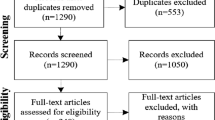Abstract
Location-aware applications are becoming increasingly attractive due to the widespread dissemination of wireless networks and the emergence of small and cheap locating technologies. We developed a location information server that simplifies and speeds up the development of these applications by offering a set of generic location retrieval and notification services to the application. The data model and the access protocols of these services are based on the X.500 directory service and the lightweight directory access protocol LDAP since these are becoming the standard attribute-value-pair retrieval mechanisms for Internet and Intranet environments. This approach establishes a smooth migration path from conventional to location-aware applications. The paper presents the location information server concepts, defines its directory data model and access services, and discusses the implementation options of the location information server.
Similar content being viewed by others
References
E. Buitenwerf, G. Colombo, H. Mitts and P. Wright, UMTS: Fixed network issues and design options, IEEE Personal Communications 2(1) (1995) 30–37.
B. Chatras and F. Gallant, Guidelines for IN data modelling, Personal Communications 2(1) (1995).
T. Falck, H. Maass, O. Schreyer and M. Stahl, Personal mobility management, Philips Telecommunication Review 52(4) (1995) 21–24.
A. Harter and A. Hopper, A distributed location system for the active office, IEEE Network (January/February 1994) 62–69.
W. Hascher, GPS: bald überall, Elektronik, 1/1997 (January 1997) 26–29.
T. Howes, M. Smith, G. Good, L. Sloan and S. Rothwell, The SLAPD and SLURPD Administrator's guide-release 3.3, University of Michigan (April 1996).
T. Howes and M. Smith, LDAP – Programming Directory-Enabled Applications with Lightweight Directory Access Protocol (Macmillan Technical Publishing, Indianapolis, IN, 1997).
ISO/IEC, Recommendation ISO/IEC 13235: Information Technology – Open Distributed Processing – ODP Trading Function (1995).
ITU-T, Recommendation Series X.5xx: Information Technology –Open Systems Interconnection – The Directory (1992).
ITU-T, Recommendation X.511: Information Technology – Open Systems Interconnection – The Directory: Abstract Service Definition (1992).
U. Leonhardt and J. Magee, Towards a general location service for mobile environments, in: Proc. 3rd Int. Workshop on Services in Distributed and Networked Environments (SDNE' 96), Macau (June 1996) pp. 43–50.
J. Lewis, LDAP unites the Internet, BYTE (December 1996) 21–26.
H. Maass, O. Schreyer and M. Stahl, Directory services for mobility management in private telecommunication networks, in: Proc. IEEE Intern. Conf. on Communications ICC' 93, Geneva, Switzerland, 23–26 May, 1993, pp. 1252–1256.
H. Maass, Location-aware mobile applications based on directory services, in: Proc. ACM/IEEE Conf. On Mobile Computing and Networking, MobiCom' 97, Budapest, Hungary, September 26–30, 1997, pp. 23–33.
Microsoft, Datasheet of Microsoft conference server, http://www. ms-normandy.com/product/conf datasheet.asp (1996).
Netscape, White Paper, An Internet approach to directories, http:// home.netscape.com/newsref/ref/ldap.html.
RFC1777, Lightweight directory access protocol (March 1995).
RFC1823, The LDAP application program interface (August 1995).
C.J. Robbins and J.P. Onions, The ISO Development Environment: User's Manual, Version 8.0 (June 1992).
B.N. Schilit and M.M. Theimer, Disseminating active map information to mobile hosts, IEEE Network (Special issue on nomadic computing) (September/October 1994) 22–32.
S. Suzuki, T. Nakanishi and T. Takahashi, Personal handy-phone system signalling protocol architecture – Study on internetwork interface for PHS roaming, in: Proc. ICUPC' 95, Meiji Kinenkan, Tokyo, Japan, November 6–10, 1995, pp. 553–557.
R. Want and A. Hopper, Active badges and personal interactive computing objects, IEEE Transactions on Consumer Electronics 38(1) (1992) 10–20.
R. Want, B.N. Schilit, N.I. Adams, R. Gold, K. Petersen, D. Goldberg, J.R. Ellis and M. Weiser, An overview of the ParcTab ubiquitous computing experiment, IEEE Personal Communications 2(6) (1995) 28–42.
X/Open Company, API to Directory Services (XDS), Issue 2, CAE Specification (1994).
Y. Yaacovi, M. Wahl, K. Settle and T. Genovese, Lightweight directory access protocol: Extensions for dynamic directory services, ASID Working Group Internet Draft (October 1996).
Author information
Authors and Affiliations
Rights and permissions
About this article
Cite this article
Maass, H. Location-aware mobile applications based on directory services. Mobile Networks and Applications 3, 157–173 (1998). https://doi.org/10.1023/A:1019168514184
Issue Date:
DOI: https://doi.org/10.1023/A:1019168514184




